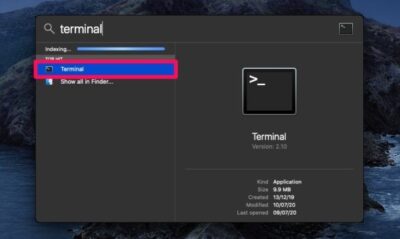How to flush DNS cache in MacOS Big Sur and Catalina??
How to flush DNS cache in MacOS Big Sur and Catalina??
MacOS users may need to flush DNS cache on their Max for certain websites, domains, or troubleshooting purposes. Flushing DNS cache is especially common with web developers and network admins, but is also used by other advanced users. This guide will go through how to flush DNS cache in MacOS Big Sur and MacOS Catalina.
If you are unable to access a recently visited website, of course, you will first check if you have an Internet connection to work. But if you are facing only connectivity problems on that particular website, it can be a DNS error, and when cleaning the DNS cache can help.
10 wellbeing retreats for 2014 | Health and fitness holidays | The Guardian pharmacom labs Rates & Availability | Mountain Trek Fitness Retreat & Health Spa
Your Mac saves the IP addresses of web servers that you have visited recently. However, if this IP address changes before logging into your DNS cache updates, you will not be able to access the site without resetting your DNS cache. Flushing the DNS cache on your Mac removes all invalid entries and forces the system to remember those addresses when you visit the website.
How to flush DNS cache in MACOS Catalina and Big Sur
Before you proceed with the following process, make sure that your Mac is running at MacOS Catalina or later, as cleaning dns cache on older versions of macOS changes a little. Now, without further action, let’s take a look at the steps required.
- We will use the terminal to flush DNS cache on your machine. You can open the terminal using Spotlight Search. To access spotlight search, click the “Magnifying Glass” icon in the top right corner of your desktop. Alternatively, you can open the spotlight by pressing the command + space bar.

- Then, type “Terminal” in the search field and open the app from the search results.

- Now, type the following command in the terminal.
sudo dscacheutil -flushcache; sudo killall -HUP mDNSResponder

- Hit the return key and you will now be asked to enter the macOS user password. Type in your password and press Return again.

Close the terminal window when it is finished.
That’s all. You successfully cleared and reset the DNS cache on your macOS machine.
It is worth noting that you will not receive a “successful” message after you type in the command. Just know that it’s done and you can confirm it by opening a website that you cannot access earlier.
Read More : Complete list of Mac OS X & macOS versions
It is good to clean UP DNS cache frequently, as sometimes they can be corrupted due to technical faults. Similarly, your Wi-Fi router also has DNS cache. This is why most people recommend rebooting the router as a troubleshooting step, as it flushes DNS cache.
If you know about other approaches to flushing DNS cash on the latest macOS release, or have a specific view, opinion or advice, share in comments!
Read More :-
Can you be more specific about the content of your article? After reading it, I still have some doubts. Hope you can help me.
Thanks for sharing. I read many of your blog posts, cool, your blog is very good.
Your article helped me a lot, is there any more related content? Thanks!
Your point of view caught my eye and was very interesting. Thanks. I have a question for you.
Can you be more specific about the content of your article? After reading it, I still have some doubts. Hope you can help me.
Your point of view caught my eye and was very interesting. Thanks. I have a question for you.
Can you be more specific about the content of your article? After reading it, I still have some doubts. Hope you can help me.
Can you be more specific about the content of your article? After reading it, I still have some doubts. Hope you can help me.